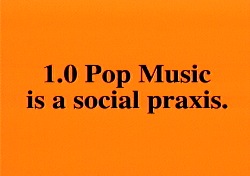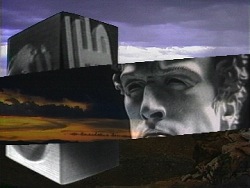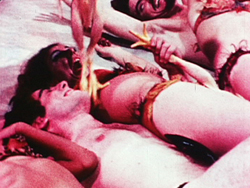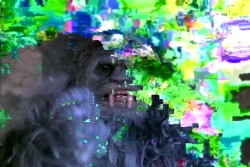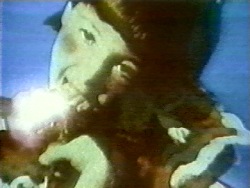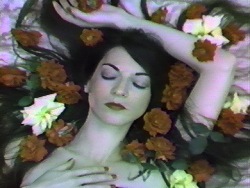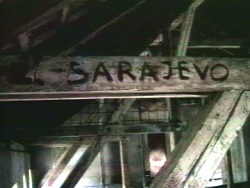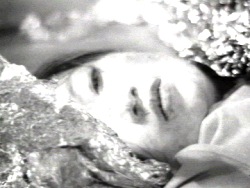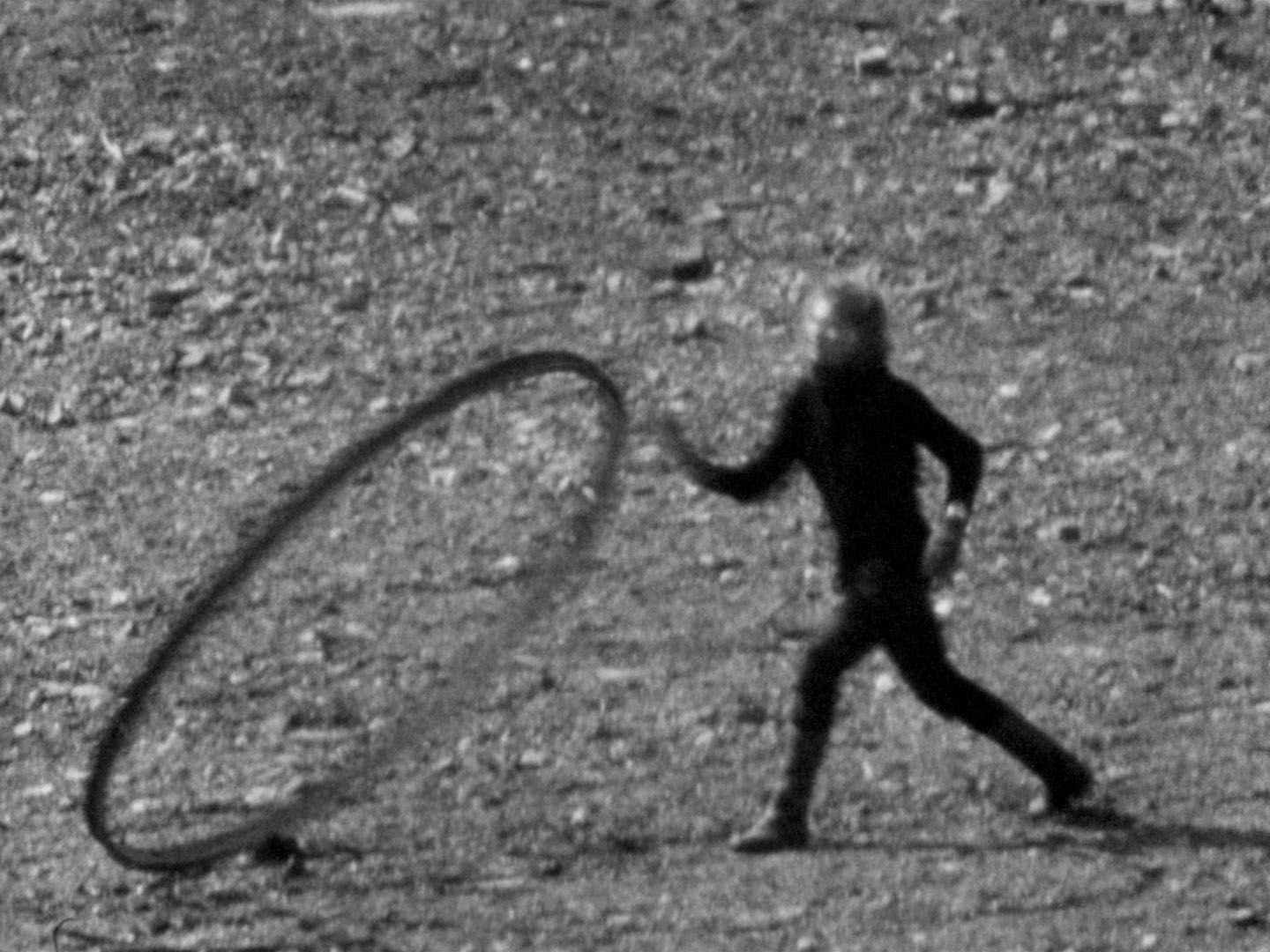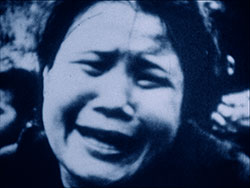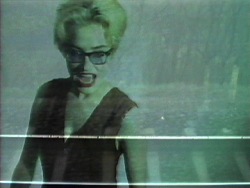
HIGH RESOLUTION: Artist's Projects at the Armory
ELECTRONIC ARTS INTERMIX VIDEO PROGRAMS
Curated by Students of The Center for Curatorial Studies
HIGH RESOLUTION: Artist's Projects at the Armory
ELECTRONIC ARTS INTERMIX VIDEO PROGRAMS
Curated by Students of The Center for Curatorial Studies
Park Avenue at 67th Street, New York City
HIGH RESOLUTION: Artist's Projects at the Armory
ELECTRONIC ARTS INTERMIX VIDEO PROGRAMS
Curated by Students of The Center for Curatorial Studies
Park Avenue at 67th Street, New York City
HIGH RESOLUTION: Artist's Projects at the Armory
ELECTRONIC ARTS INTERMIX VIDEO PROGRAMS
Curated by Students of The Center for Curatorial Studies
Park Avenue at 67th Street, New York City
Works
This is the first in Cokes' non-consecutively produced series of "promotional tapes" for his conceptual band SWIPE. 3#, subtitled Manifesto A Track #1, introduces Cokes' concern with the ideological apparatus that undergirds the music industry. The video takes up a song by Seth Price, which is itself the systematic recreation of an early electronic pop song by Kraftwerk.
Art of Memory is a major work, an original and mature articulation of Vasulka's inquiry into the meaning of recorded images. Constructing a haunted theater of memory from a spectacle of filmic and electronic images, Vasulka collapses and transforms collective memory and history in an enigmatic...
Writes Schneemann: "Meat Joy is an erotic rite — excessive, indulgent, a celebration of flesh as material: raw fish, chicken, sausages, wet paint, transparent plastic, ropes, brushes, paper scrap. Its propulsion is towards the ecstatic — shifting and turning among tenderness, wildness, precision, abandon; qualities that could at any moment be sensual, comic, joyous, repellent..."
Takeshi Murata continues to push the boundaries of digitally manipulated psychedelia. In Monster Movie Murata employs an exacting frame-by-frame technique to turn a bit of B-movie footage into a seething, fragmented morass of color and shape that decomposes and reconstitutes itself thirty times per second.
Now takes on video's claims to immediacy and authenticity, as Benglis juxtaposes live performance with her own prerecorded image. The soundtrack features phrases such as "now!" and "start recording," commands that usually ground us in the present, but here serve to deepen the confusion between live signals and mediation. Repeated takes and acidic color processing heighten this challenge to video's power of "liveness."
This delirious montage of appropriated and computer-generated elements merges perennial Paper Rad themes such as Gumby and the 8-bit computer aesthetic with a keen, critical take on contemporary culture. This self-described "mix tape" — a term that refers here both to the group's montage strategy and to popular compilations of bootlegged hit music — takes on the war in Iraq, the art market, and the images of ostentatious wealth and glamor flaunted by pop stars today.
Produced to coincide with the 1984 Presidential Campaign, the piece is a cautionary tale that brings to life a prototypical politician, as packaged by Madison Avenue. Concise as a commercial, insistent as a pop song, Perfect Leader is Almy's most effective use of television techniques to critique the impact of the media on contemporary life.
PM Magazine/Acid Rock is a spectacle of visuals and sound, a delirious collage of appropriated TV imagery and dynamic pop music. The introduction to the nightly television broadcast PM Magazine and a segment of a Wang computer commercial are the sources for the highly edited and computerized...
Possibly in Michigan is an operatic fairy tale of cannibalism, desire and dread in Middle America, a densely collaged narrative in which Beauty meets the Beast in the surreal landscape of shopping-mall suburbia. Two women with a penchant for "violence and perfume" take revenge on their...
Marker's concern with war's effect on civilians has been a feature of his work since the 1960s. This politically direct tape looks at the function of media for a viewership that has been stripped of a homeland. In the vandalized ruins of an army barracks in Roska, Slovenia, lives a community of...
Another regular evening at Mike's house turns into a comic nightmare. Finding himself a stranger in his own apartment, a "world totally fashioned from the effluvia of TV and pop music," Mike is plagued by a mysterious drop ceiling, his dry cleaning, and a host of ghostly visitors. This postmodern...
This is a newly restored version of documentation of the 1967 group performance Snows, which was built out of Schneemann's outrage and sorrows over the atrocities of the Vietnam War. In an ethereal stage environment combining colored light panels, film projection, torn collage, hanging sacks of colored water, "snow," crusted branches, rope, foil and foam, an audience-activated electronic switching system controlled elements of the performance/installation.
This 1973 black-and-white film is a rediscovered classic. Performing with a "cast" that includes Gordon Matta-Clark, Jonas choreographs a theater of space, movement, and sound, with the urban landscape of New York in a featured role. Jonas creates a highly original if enigmatic theatrical...
Ahwesh's two young actresses, Martina and Sonja, cross-dress in vampire capes and werewolf claws, re-enacting familiar horror tropes. A roughly corresponding soundtrack of stock screams and "scary" music suggests that the girls' toying with gender roles and power dynamics may have dire consequences.
Viet-Flakes was composed from an obsessive collection of Vietnam atrocity images, compiled over five years, from foreign magazines and newspapers. Schneemann uses the 8mm camera to "travel" within the photographs, producing a volatile animation.
At once playful and disconcerting, You Called Me Jacky features Rist lip-synching to the title song, her image superimposed with fleeting images seen from the window of a moving train. Miming with exaggerated gestures or vamping in convincing imitation of Madonna, even as she flubs her lines, Rist negotiates the music-video format's claims to slickness and production values as well as its desire for raw authenticity.
